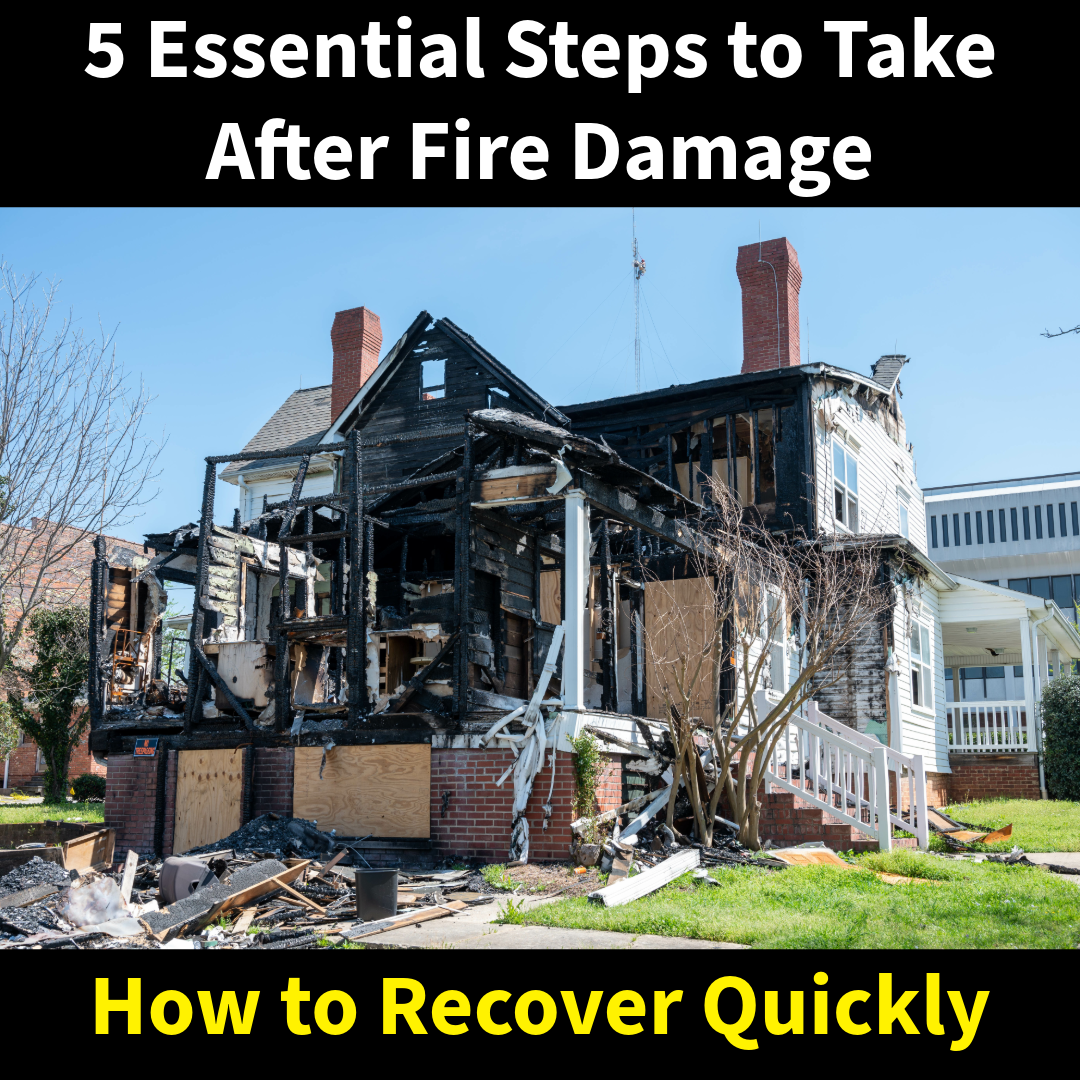Experiencing fire damage can be overwhelming, and knowing what to do next is crucial for ensuring your safety and beginning the recovery process. At Mold Solutions & Inspections, we specialize in helping homeowners in Pennsylvania, New Jersey and Delaware to restore their properties after disasters. Here’s a step-by-step guide to help you navigate the aftermath of fire damage.
1. Ensure Safety First
Before returning to your property, ensure it’s safe to do so.
- Wait for clearance from the fire department.
- Be cautious of structural damage, soot, and lingering smoke, which can pose health risks.
- If you must enter, wear protective gear like masks, gloves, and sturdy shoes.
If the area is deemed unsafe, avoid entering and contact professionals to assess the situation.
2. Contact Your Insurance Company
Report the fire damage to your insurance provider as soon as possible.
- Take detailed notes and photos of the damage for documentation.
- Ask your insurance agent about your coverage and the claims process.
- Keep records of all communication with your insurer for reference.
At this stage, partnering with a restoration company like ours can help streamline the insurance claim process, as we provide detailed damage assessments and work with your adjuster directly.
3. Secure the Property
Protect your home from further damage by taking temporary measures:
- Board up broken windows or doors.
- Tarp over exposed areas to prevent water damage from rain.
- Consider changing locks if the security of the home is compromised.
Our team can assist with securing your property to minimize additional risks.
4. Begin Cleaning and Salvaging
While the urge to clean may be strong, fire damage often requires specialized cleaning techniques to ensure proper restoration:
- Avoid scrubbing walls or furniture stained with soot—it can make the damage worse.
- Remove valuable or sentimental items from the property, if possible, but don’t attempt to clean them on your own.
- Discard food, cosmetics, and medications that may have been exposed to heat or smoke.
We provide professional cleaning services to safely remove soot, smoke residue, and odors from your home and belongings.
5. Hire a Professional Restoration Team
Restoring fire damage involves more than just cleaning—it often requires repairs, odor removal, and addressing potential water damage from firefighting efforts. A professional restoration team ensures a comprehensive approach:
- Assessing and repairing structural damage.
- Removing harmful smoke residues and odors.
- Restoring your home to pre-fire conditions.
At Mold Solutions & Inspections, we bring expertise, state-of-the-art equipment, and a commitment to restoring your home quickly and efficiently.
Why Choose Mold Solutions & Inspections?
Serving Philadelphia, Delaware County, Montgomery County, Bucks County and New Jersey, we pride ourselves on being a trusted partner during difficult times. From securing your property to managing insurance claims and providing top-notch restoration services, we’re here to help you every step of the way. If you’ve experienced fire damage, don’t hesitate to contact us for a free consultation. Let us take the stress out of restoration, so you can focus on what matters most—moving forward.

